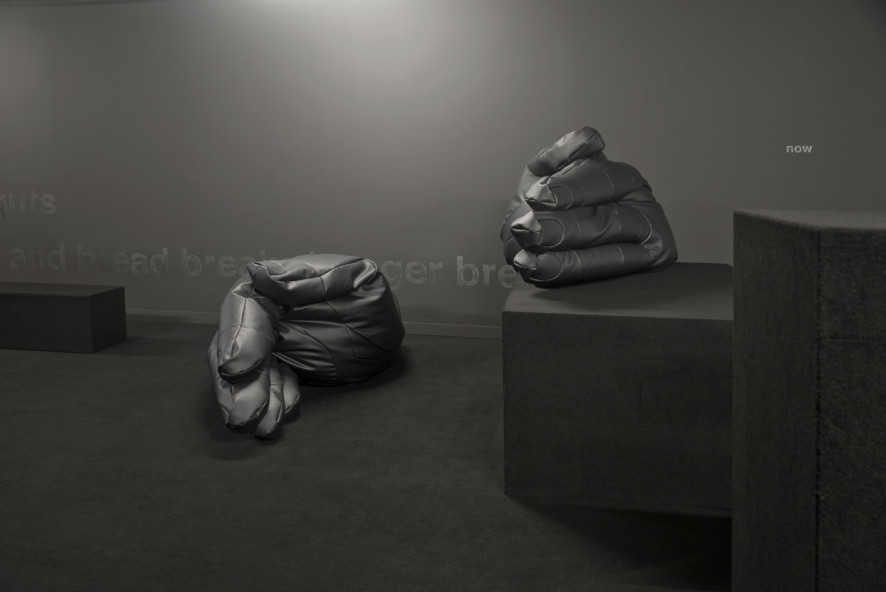Throw hands, 2015
cushions, artificial leather, furniture stuffing,
2x 240 x 50 x 100 cm
Edition 1/2
Exhibitions
2018 “lo sono qui!”, MACRO Museum Testaccio, Rome, IT2015 Hold On, Stedelijk Museum Bureau Amsterdam, Amsterdam, NL
2015 Thessaloniki Biennale, Athenes, Greece
These hands illustrate that the public sphere has enlarged
and become more chaotic in the past century. Photos of
politicians rarely appeared in the paper in 1920, but by the
late 1960s, politicians could be seen on TV debating in the
House of Representatives, and today, they tweet voting-booth
selfies. Politicians’ increased visibility in the public domain has
not necessarily made their thoughts or actions transparent.
To the contrary, it seems to distract attention from public and
social interests, especially when the subject of discussion is a
politician’s pants suit or motorcycle.
By having chosen a selection from an enormous number of
fragments, making them his own and then again making them
public, Pittas creates new meaning, the value of which is not
always clear. This strategy appears to fit seamlessly with
contemporary reality, where the significance of what it means
to be public also remains unclear. Of all the possible meanings
of public, only one seems to be becoming ever more powerful
today: that of publicizing or making something known to the
world. Other senses of public – such as something being out in
the open, or belonging to or being associated with government,
society, or a specific social group (i.e. the public sector) –
appear to be overshadowed by the dominant sense of public.
There is a great deal of ambiguity wrapped up in the
contemporary meaning of public. The hand – the body part so
often encountered in the public domain – appears to be a most
apt symbol for laying bare this equivocality.

